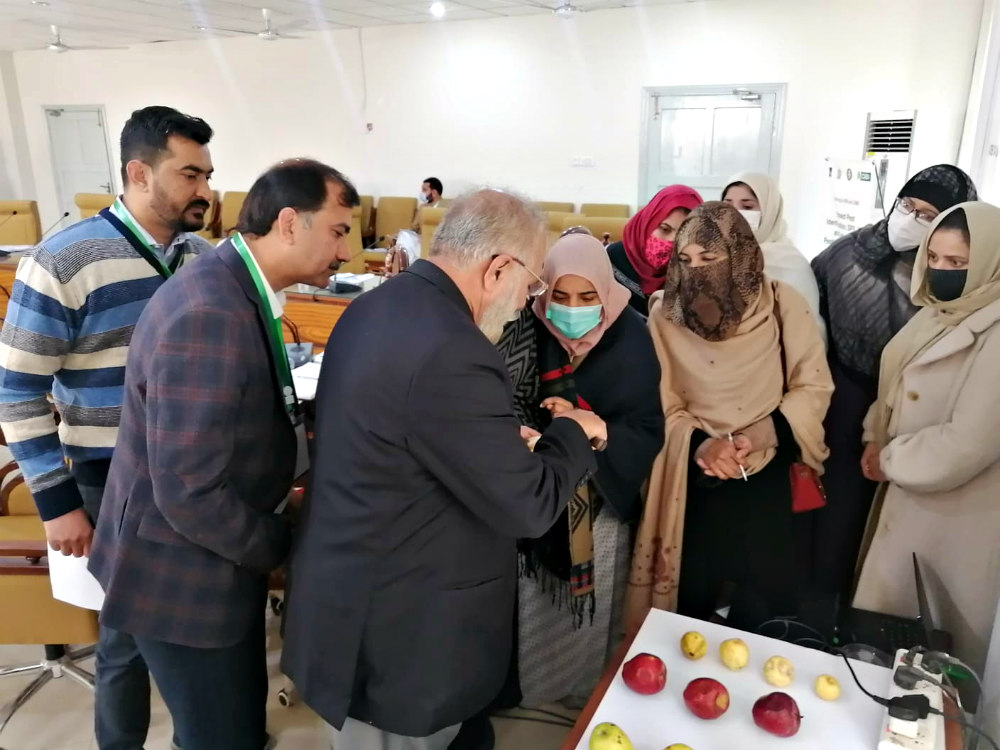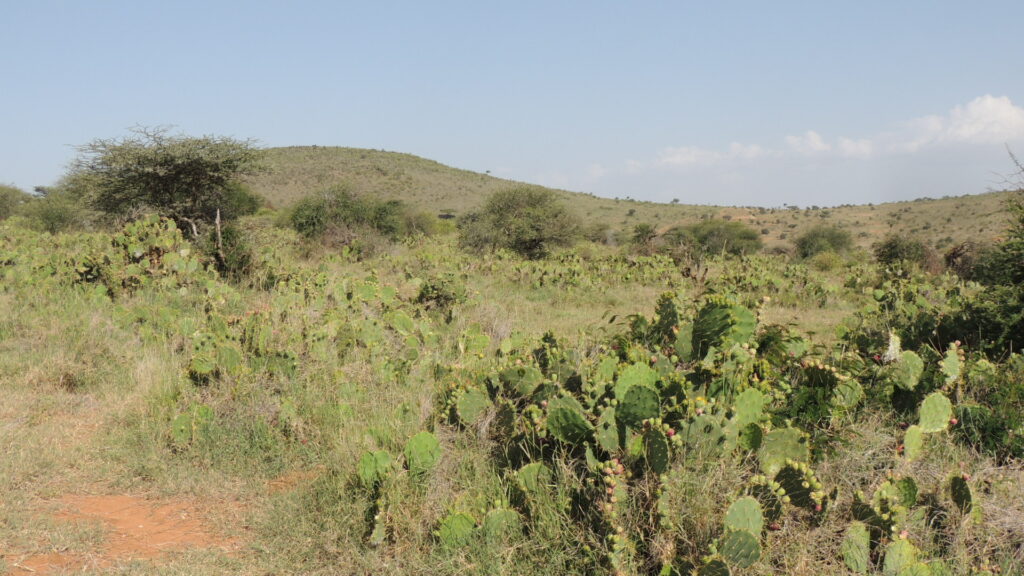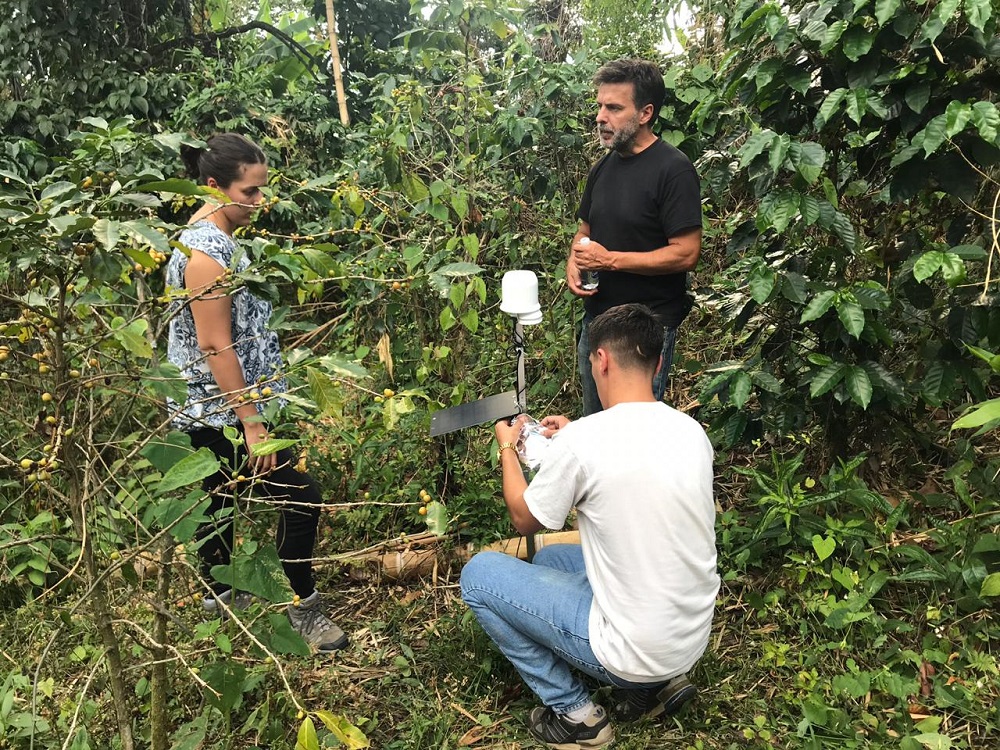CABI Blog
Tag: climate change
You are here: CABI Blog
COP27: helping farmers adapt to climate change
November 16, 2022
Jonathan Casey
No Comments
As COP27 continues this week, adaptation is high on the agenda, writes Jonny Casey, CABI’s Climate Change Manager. How can smallholder farmers adjust their practices to adapt to higher global temperatures? A key topic is inclusive, locally-led adaptation approaches to landscape governance. This is a vital component of resilience-building, which CABI has championed through initiatives…
CABI partners in training to help ensure Pakistan’s food security amid challenges of climate change
August 10, 2022
Kazam Ali
No Comments
Pakistan, according to a report published by the Asian Development Bank (ADB) and World Bank, is one of the world’s countries most at risk from the impacts of climate change with temperatures potentially rising considerably above the global average.
CABI at COP26
December 13, 2021
Jonathan Casey
No Comments
Some may wonder, yet again, where agriculture was at COP26. Despite agriculture being the sector most vulnerable to climate change impacts particularly in low-income countries, and globally is one of the largest contributors to greenhouse gas emissions, it remains side-lined from the main negotiations.
Carbon sequestration in Africa at the expense of livelihoods and biodiversity
November 15, 2021
Arne Witt
No Comments
By Dr Arne Witt, CABI Africa According to the World Resources Centre, Africa accounts for only 2–3 percent of the world’s carbon dioxide emissions from energy and industrial sources. In fact, Africa’s per capita emissions of carbon dioxide in the year 2000 were 0.8 metric tons per person, compared with a global figure of 3.9…
Invasive Species Management – a nature-based solution for climate and environment
November 11, 2021
Jonathan Casey
No Comments
The UK is hosting the 26th UN Climate Change Conference of the Parties (COP26) in Glasgow from 31 October to 12 November 2021. This is the final article in a series of four blogs by Jonathan Casey, Climate Change Manager at CABI, in support of CABI’s involvement at the event.
Life in Earth – Soil microbes are key to achieving net zero
November 10, 2021
Wayne Coles
No Comments
CABI contributes to COP26-focused article by members of UK microbiome innovation community, on critical role of soil microbiome in achieving net zero. Today, CABI, and other members of the UK’s microbiome innovation community announced the publication of a COP26-focused statement on the critical role of the soil microbiome in climate change and how it could contribute…
Climate-smart pest management for nature-positive agriculture
November 8, 2021
Jonathan Casey
No Comments
The UK is hosting the 26th UN Climate Change Conference of the Parties (COP26) in Glasgow from 31 October to 12 November 2021. This is the third in a series of four blogs by Jonathan Casey, Climate Change Manager at CABI, in support of CABI’s involvement at the event.
Invasive species management – a policy tool for integrated climate adaptation
November 1, 2021
Jonathan Casey
No Comments
The UK is hosting the 26th UN Climate Change Conference of the Parties (COP26) in Glasgow from 31 October to 12 November 2021. This is the first in a series of four blogs by Jonathan Casey, Climate Change Manager at CABI, in support of CABI’s involvement at the event.
Review highlights Uganda’s neglected crops and climate change challenges
October 25, 2021
Wayne Coles
No Comments
A new CABI-led review has been published which highlights the importance of restoring Uganda’s neglected crops to market as well as the need for increased crop diversification amid food security issues exacerbated by the risks of climate change.
Digital climate advisory services – an investment case for equity
August 5, 2021
Jonathan Casey
No Comments
The need for climate adaptation Smallholder farmers are facing increasing impacts from droughts, floods, heatwaves and wildfires, as well as crop pests and diseases, being driven by climate change. And these issues are only projected to get worse as our world warms over the coming years. Smallholders are the backbone of our global food supply.…
Subscribe to blog
DISCLAIMER
Views expressed in contributions do not necessarily reflect official CABI positions.
Archives
Categories
- Agriculture and International Development
- Veterinary and Animal Sciences
- Climate change and biodiversity
- Publishing
- Value chains and trade
- Crop health
- Environmental Sciences
- Human Sciences
- Tourism, Hospitality and Leisure
- Food and nutrition security
- Plant Sciences
- Gender and youth
- Digital development
- Development communication and extension
- Economic development
- Invasive species
- CABI Bioservices
- One Health










